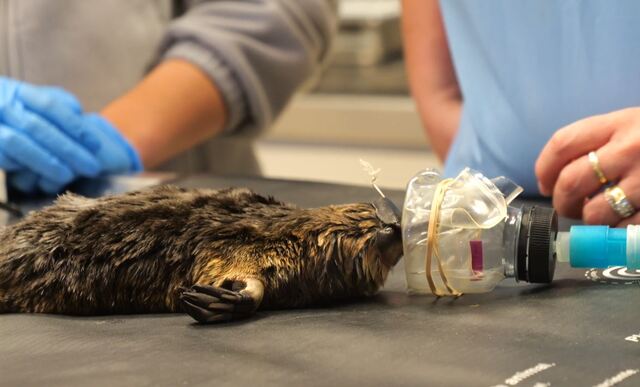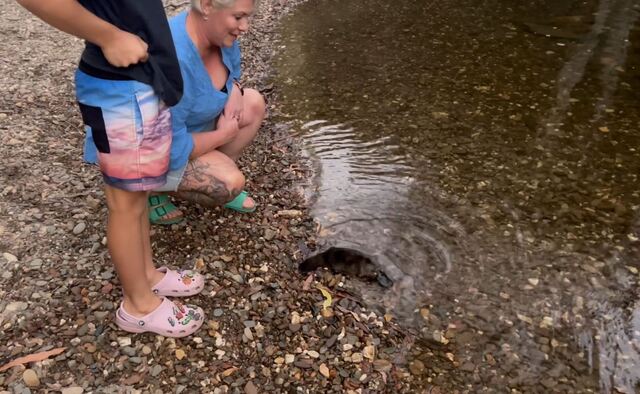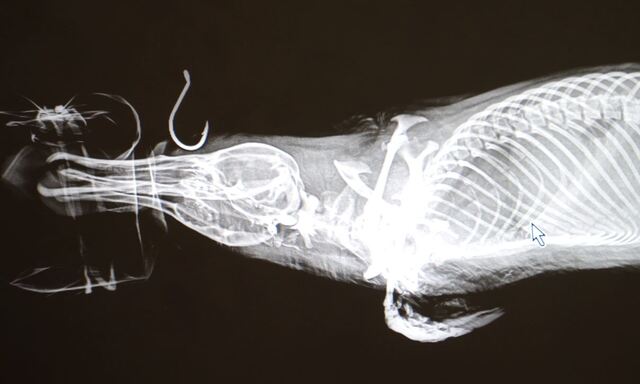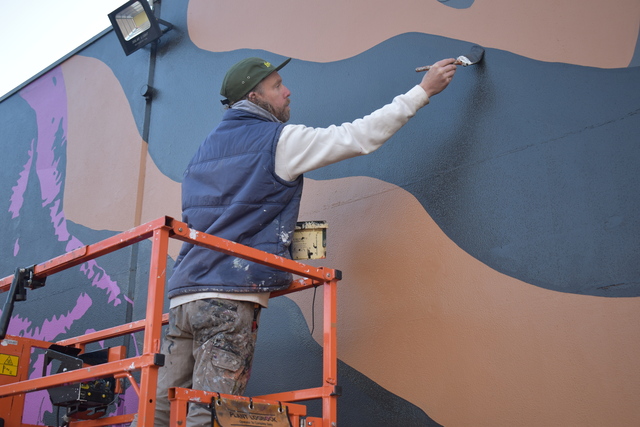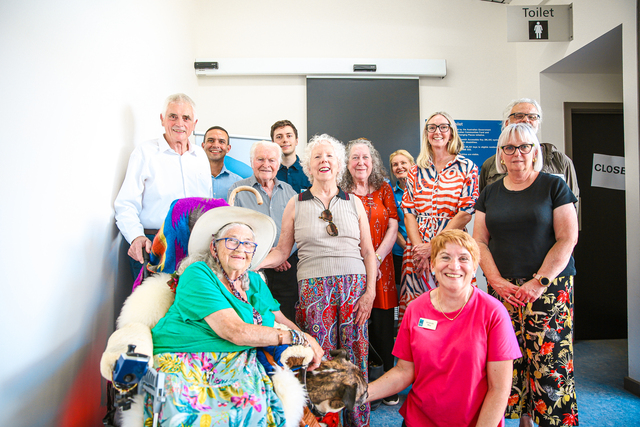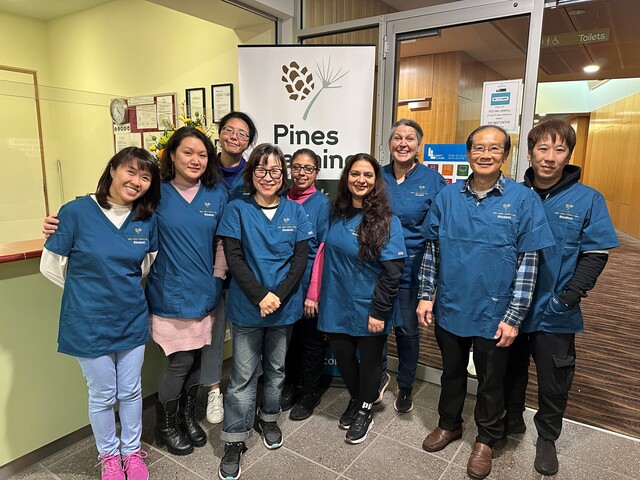Healesville Sanctuary veterinarians are proving they have nerves of steel after delicately removing a fishhook from the bill of a wild Platypus.
The female monotreme was found tangled in debris on a creek bed near the township of Jamieson [northeast Victoria] before she was transported to the Sanctuary’s Australian Wildlife Health Centre.
Despite grim looking X-rays, vets worked quickly, placing the Platypus under general anaesthetic, chopping off the tip of the hook and sliding the metal back through the piercing hole.
Healesville Sanctuary Associate Veterinarian Dr Chloe Steventon said the fishhook went completely through the structure at the top of the bill, known as the shield, and the laceration went through to the animal’s left eyelid.
“The shield is the mobile flap of tissue at the base of the bill quite close to the eyes,” Dr Steventon said.
“Platypus bills have incredibly sensitive tissue. Approximately 40,000 electroreceptors are found in the bill to help them find food underwater. In this situation, the Platypus was lucky that the hook was through the shield only.
“The eyelid injury was concerning. We used tissue glue to close it back together and then monitored the animal extensively. Anti-inflammatory treatment reduced swelling and conjunctivitis.”
Dr Steventon said it was a privilege to release the Platypus back to her natural environment after a three-week recovery.
“Watching her enter the water and swim away is one of the best parts of this job,” Dr Steventon said.
As Platypuses need to eat in water regularly, they are incredibly difficult to treat as their wounds need to be kept dry to heal successfully.
In the 2023-24 financial year, seven wild Platypuses received care at Healesville Sanctuary.
The most common reason for presentation is entanglement in rubbish.
Zoos Victoria and the Victorian Fisheries Authority are working together to untangle the threats to aquatic wildlife by installing Seal the Loop bins to prevent potentially harmful materials entering the water.
There are more than 300 brightly coloured bins all around Victoria’s coastlines and waterways.
Healesville Sanctuary is boosting its capacity to care for Platypus into the future by creating an Australian Platypus Conservation Centre.
The Victorian State Government has dedicated $5 million to build the state-of-the-art centre that will include a research hub and enhance capacity to care for injured animals and Platypus impacted by extreme weather emergencies.
Stage one of the Australian Platypus Conservation Centre is currently in development.
A purpose-built platypus hospital is being constructed this year.
Platypuses have unique husbandry requirements, being semi-aquatic and only feeding in the water.
It will have cameras set up to monitor their behaviour and varied water depths to suit the needs of a sick animal.

